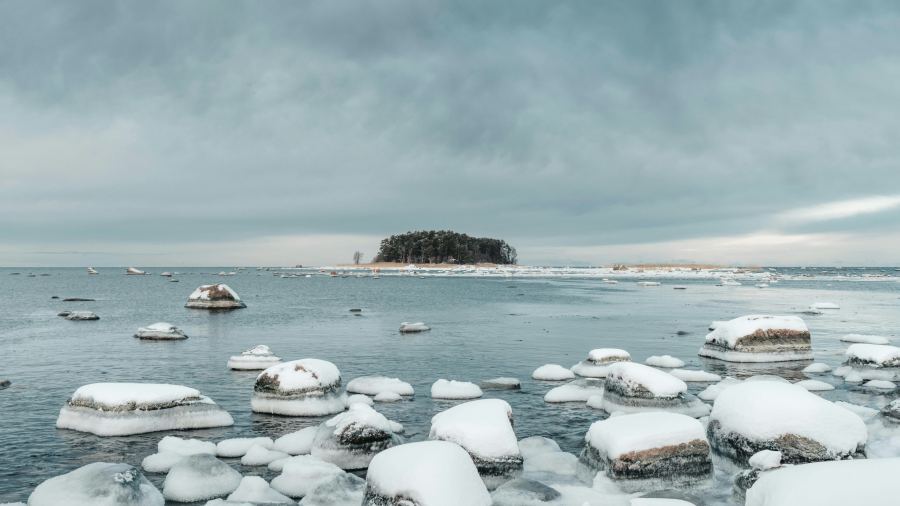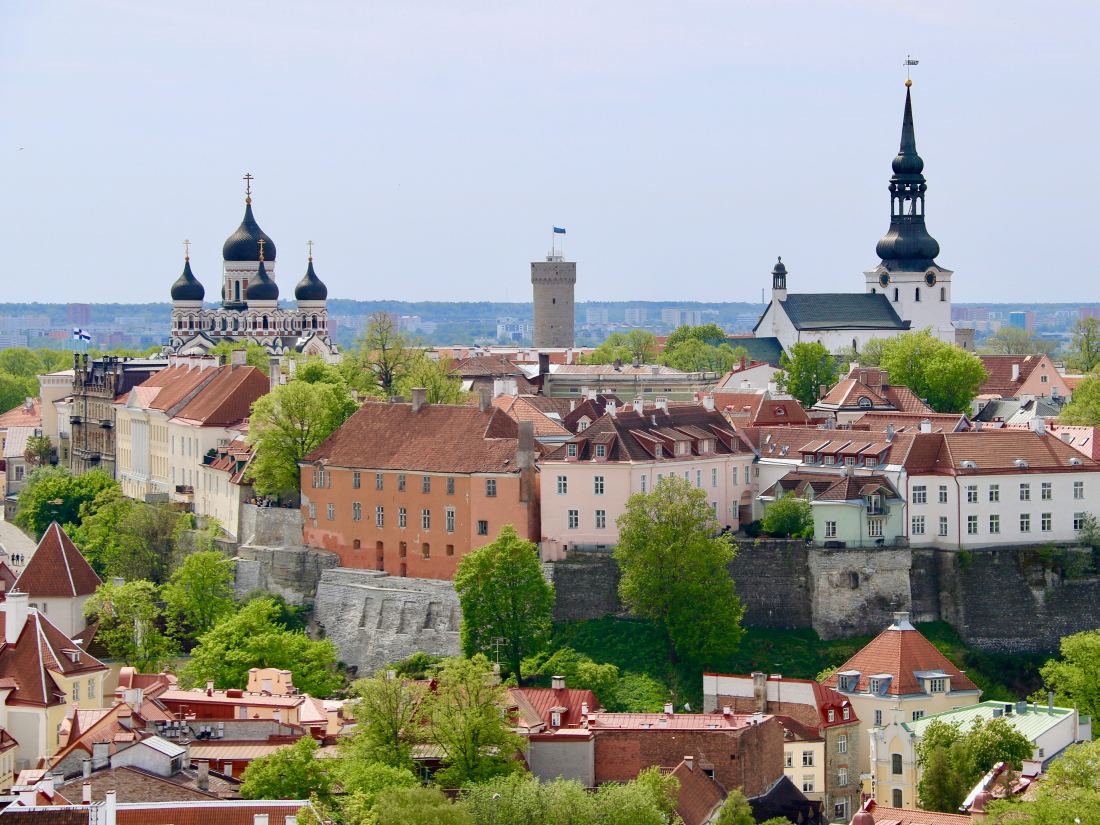Estonia is the pearl of the Baltic region, where medieval old towns and pristine natural landscapes can be found.
Estonia is located in the northern part of Europe, on the eastern shore of the Baltic Sea, south of Finland and north of Latvia. Besides its rich natural values, visitors are attracted by its special cultural identity, digital advancement, and the unique blend of Scandinavian and Baltic traditions.
Table of Contents
Best places in Estonia
Tallinn
Estonia’s capital and largest city. Its Old Town, part of the UNESCO World Heritage, is one of Europe’s best-preserved medieval city centers.
The oldest part of the city rises on Toompea Hill, surrounded by city walls, offering a picturesque view of the red-roofed houses and the Baltic Sea. Walking through the narrow, cobblestone streets of the Old Town feels like stepping back in time. The impressive Alexander Nevsky Cathedral represents the Russian Orthodox influence, while the slender tower of St. Olaf’s Church exemplifies the masterpiece of medieval architecture.
Tallinn is not only famous for its historical monuments: the Kalamaja district north of the city center has transformed into a bohemian, creative hub in recent years. The Telliskivi Creative City, converted from old factory buildings, attracts visitors with design shops, art studios, and trendy restaurants. The city proudly bears the title of „Digital Capital” as Estonia plays a leading role globally in e-services.
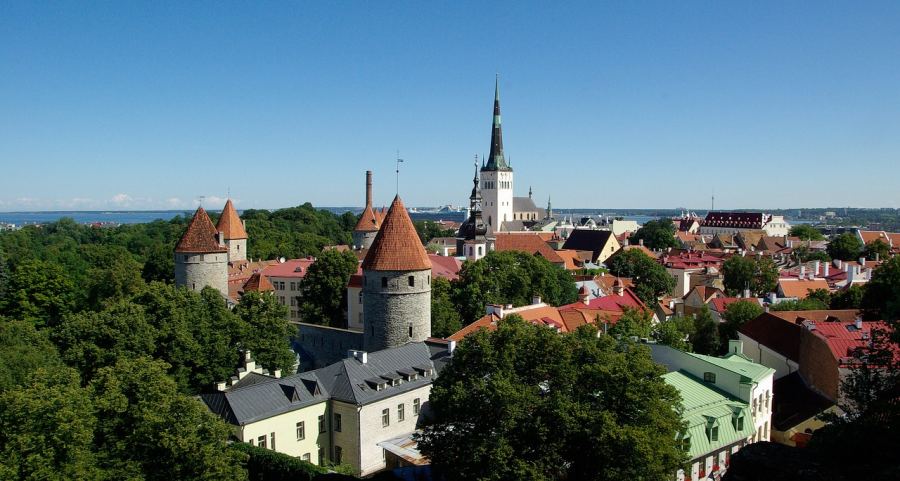
Lahemaa National Park
Estonia’s largest and oldest national park is located just 50 kilometers east of Tallinn.
Established in 1971, the nearly 725 square kilometer protected area contains diverse ecosystems – sea bays, peninsulas, swamps, primeval forests, and coastlines. Four picturesque peninsulas extend into the Gulf of Finland within the park, with Käsmu being the most famous.
The historical heritage of Lahemaa National Park is also noteworthy: the magnificent Palmse, Sagadi, and Vihula manor houses provide insight into the once luxurious life of the Baltic German nobility. Visitors can explore the stunning beauty of the countryside on established hiking trails by foot, bicycle, or even on horseback.
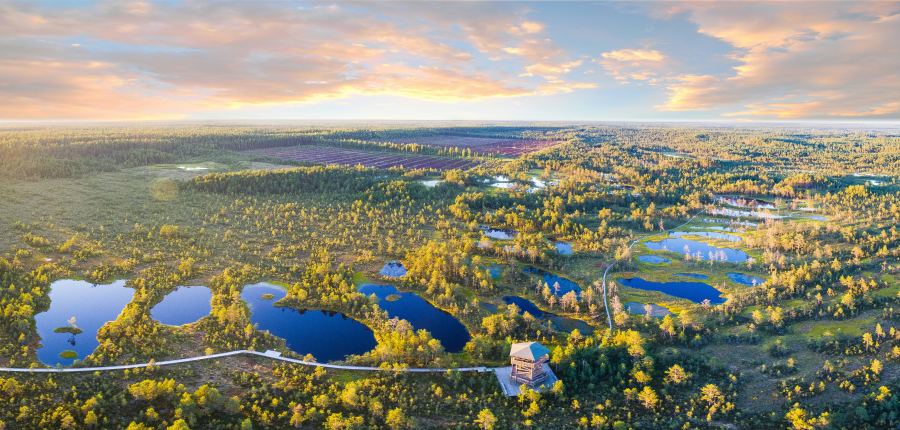
Pärnu
Located in the southwestern part of the country, on the shores of Pärnu Bay, it is the country’s most popular seaside resort, often called „Estonia’s summer capital”.
With its nearly 10-kilometer-long fine sandy beach and shallow, quickly warming water, it is especially popular among families. Thanks to its spa culture dating back more than 180 years, numerous wellness centers offer mud treatments and seawater therapies. The historic building of Pärnu Mud Baths is a distinctive landmark that defines the cityscape.
Pärnu offers excellent opportunities not only for relaxation but also for cultural experiences. During the summer months, the city hosts internationally renowned festivals, such as the Pärnu Film Festival or the Pärnu Music Festival.
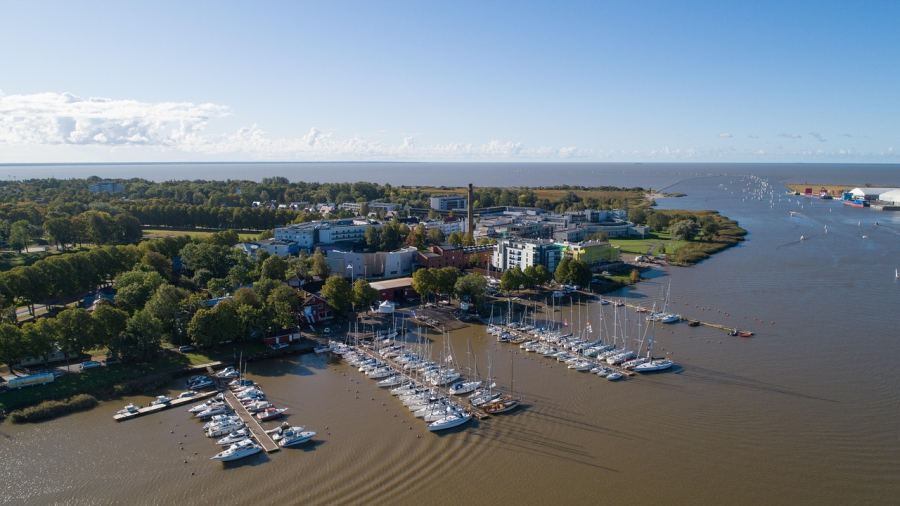
Saaremaa Island
Estonia’s largest island is located in the eastern part of the Baltic Sea, in the Gulf of Riga. The island, covering more than 2,700 square kilometers, is a unique combination of medieval heritage and pristine natural environment.
The island’s most significant attraction is the 13th-century Kuressaare Episcopal Castle, Estonia’s best-preserved medieval fortress. Its massive walls, towers, and moat provide an impressive sight. The museum housed in the castle showcases the island’s rich history and cultural heritage.
A special natural attraction of Saaremaa is the Kaali Crater, created by a meteorite impact nearly 4,000 years ago, which with its 110-meter diameter and 22-meter depth exudes a mystical atmosphere.
The island is also famous for its traditional windmills, the most well-known being the group of Angla windmills. The ensemble consisting of five historical mills preserves the memories of traditional Estonian rural lifestyle.
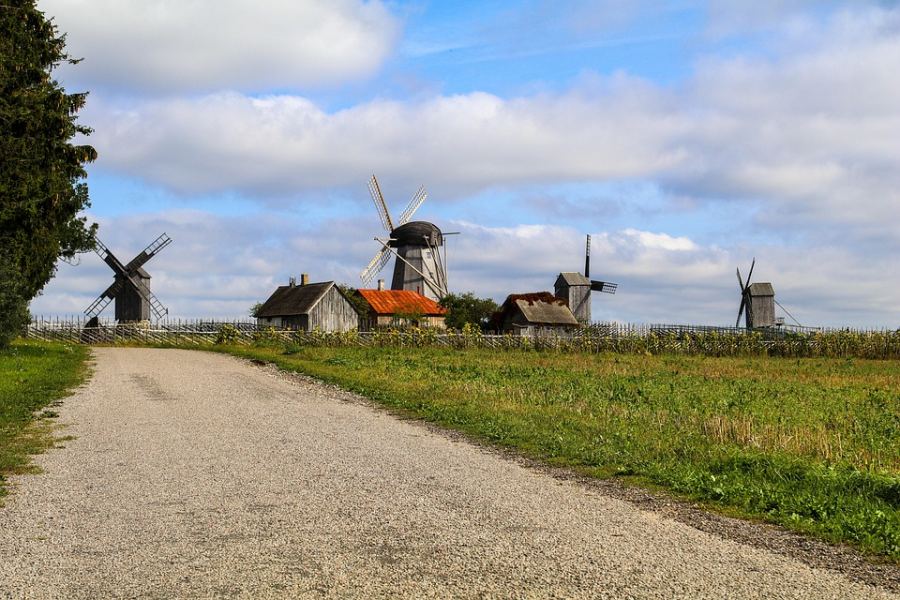
Narva
The easternmost city is located directly on the Russian border, on the banks of the Narva River. It is the country’s third-largest settlement, where the majority of the population is of Russian ethnicity, creating a unique cultural mix of Baltic and Slavic traditions.
The city’s most impressive attraction is the Hermann Fortress, founded in the 13th century and rebuilt in Baroque style in the 17th century, which towers over the Narva River. Facing the Ivangorod Fortress on the other side of the river, in Russian territory, it offers an extraordinarily spectacular panorama.
Narva’s cityscape was significantly transformed by the destruction in World War II – the formerly Baroque-style downtown was replaced by Soviet-type buildings. Nevertheless, some historical buildings survived the war, including the 17th-century town hall. The nearby Narva-Jõesuu resort’s 7-kilometer-long fine sandy beach has been nicknamed the „Estonian Riviera” for its exceptional beauty.
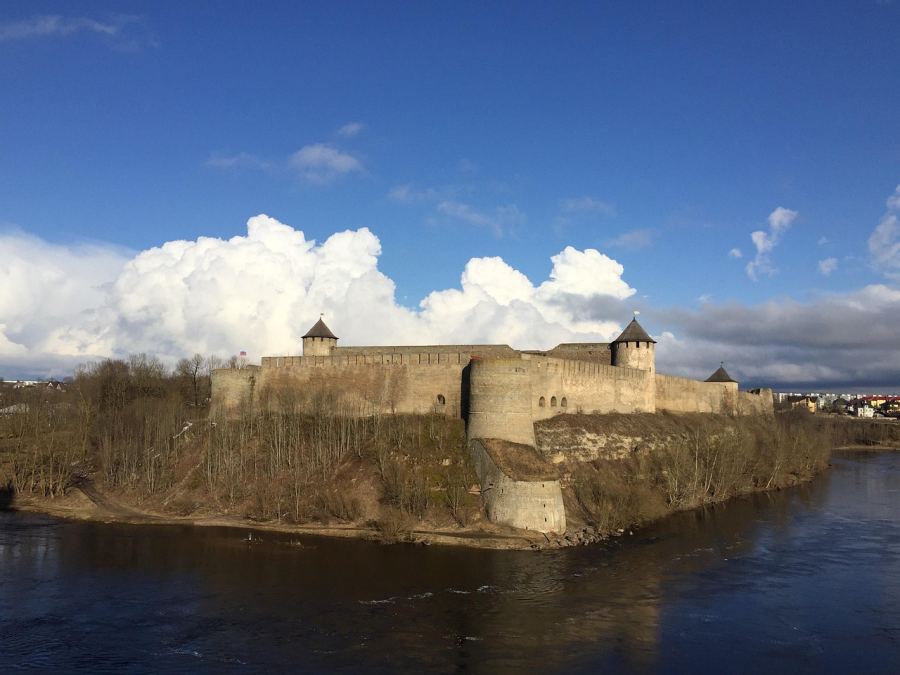
Hiiumaa Island
Estonia’s second-largest island is located in the Baltic Sea, just 22 kilometers from the western coast.
One of the symbols of the island is the Kõpu Lighthouse. The oldest continuously operating lighthouse in the Baltic region has been helping sailors navigate since 1531. From the top of the 36-meter-high, massive tower, there is a breathtaking view of the surrounding forests and the sea. The island’s other famous lighthouse, Tahkuna, is Estonia’s tallest lighthouse at 43 meters high.
Hiiumaa’s coastline presents a varied picture: sandy beaches, rocky shorelines, and shallow bays alternate. The interior of the island is covered with extensive pine forests and marshlands, where numerous rare plant and animal species find refuge.
Tartu
Estonia’s second-largest city, located in the southeastern part of the country, on the banks of the Emajõgi River.
This distinguished settlement is often called „Estonia’s intellectual capital”. It is home to the country’s oldest and most prestigious higher education institution, the University of Tartu, founded in 1632.
The Raekoja plats (Town Hall Square) in the heart of the city is the central element of the medieval urban structure, where the 18th-century, classicist-style town hall stands. The „Kissing Students” fountain on the square has become one of the symbols of the city. The university’s botanical garden is home to more than 6,500 plant species.
Its cultural life is extremely vibrant: numerous museums, including the new, ultra-modern building of the Estonian National Museum, the interactive exhibitions of the AHHAA Science Center, and the Vanemuine Theater with its rich program offerings await visitors.
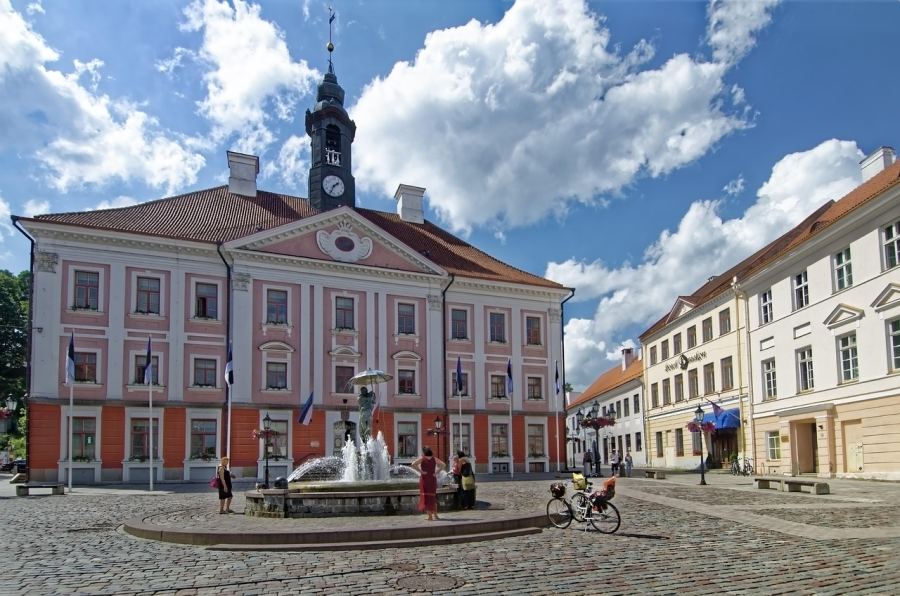
Soomaa National Park
The national park, covering nearly 390 square kilometers, was established in 1993 to protect the country’s unique wetlands and related ecosystems.
The area, also known as the „land of bogs”, encompasses five vast bog areas, which are among Europe’s most valuable and best-preserved peat bogs.
The specialty of the park is the so-called „fifth season” when spring thaws flood the area, and forests and meadows are submerged. During this time, traditional canoes carved from a single tree trunk, called „haabja”, are used for transportation, offering a unique natural experience for visitors. More than 185 bird species and numerous protected mammals live in the national park, including moose, lynx, and brown bears.
Marked hiking trails and educational paths starting from the visitor center allow nature lovers to safely explore this special ecosystem. The boardwalk of the Riisa nature trail leads to the heart of the bog, while from the observation tower of the Kuresoo bog, a breathtaking panorama opens up to the pristine landscape.
Viljandi
This charming small town is located in the southwestern part of Estonia, among picturesque hills, on the shores of Lake Viljandi.
The history of the settlement dates back to the 12th century when the Teutonic Order erected its impressive stone castle here, the ruins of which still stand at the highest point of the town. The park created around the castle ruins offers a breathtaking view.
However, Viljandi is best known as „Estonia’s folk capital”, thanks to the annually held Viljandi Folk Music Festival, which is one of Europe’s largest and most prestigious traditional music festivals. The event attracts tens of thousands of visitors from all over the world.
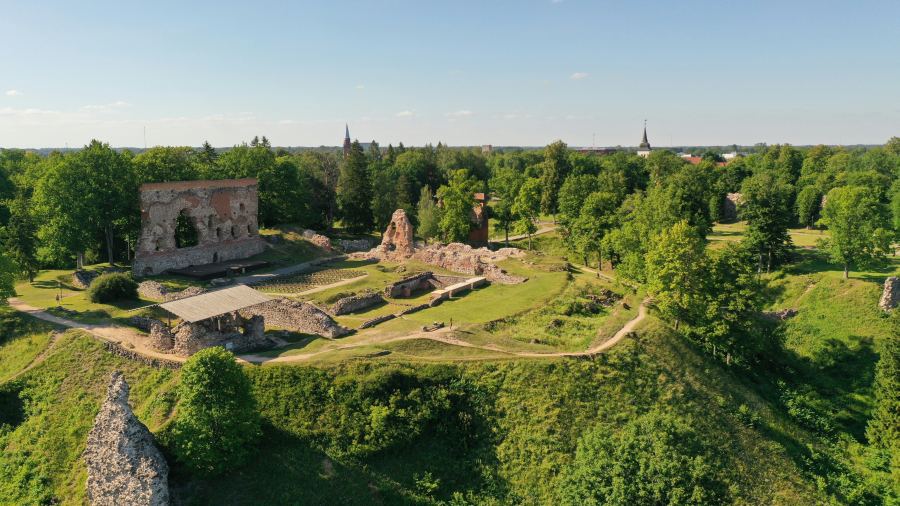
Kihnu Island
This tiny island, just 16 square kilometers in area, is located in the Gulf of Riga.
It is part of UNESCO’s intangible cultural heritage due to its special matriarchal social structure and living folk traditions. Kihnu is the only place in Europe where women still wear traditional folk costumes as everyday attire, especially the characteristic, brightly red-striped skirts.
Women play an especially important role in the life of the community living on the island; they are the guardians and transmitters of cultural traditions, while men often go to sea for fishing for long months or work on the mainland. The preserved folk crafts on the island, especially weaving, embroidery, and knitting, represent a high level of artistic value.
The Kihnu Museum showcases the peculiarities of local lifestyle and the history of the island. The 19th-century lighthouse is one of the symbols of the island, from where, in clear weather, there is a spectacular view of the sea. The island’s transportation is also unique: locals travel on motorcycles on the dirt roads, while tourists can rent bicycles to explore the island.
Rummu Quarry Lake
This breathtakingly beautiful, fairy-tale lake is located just 45 kilometers west of Tallinn.
After the end of limestone mining and the shutdown of pumps in the former quarry area, groundwater flooded the area, creating this special lake with turquoise water. Due to the extraordinary clarity and transparency of the lake’s water, it is a popular diving destination, where one can admire the former mining buildings, equipment, and the ruins of the flooded prison underwater.
In recent years, Rummu Quarry Lake has become an increasingly popular tourist destination, where visitors can enjoy the beach, swim, dive, or even explore the unique water landscape on paddleboards.
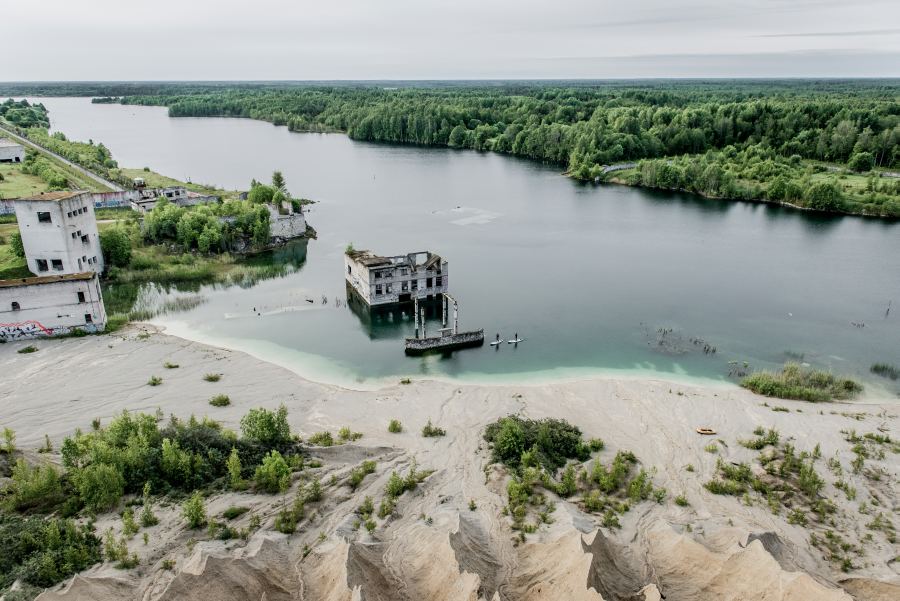
Käsmu
The picturesque fishing village, also known as the „village of captains”, is located on Estonia’s northern coast, in the Lahemaa National Park.
This settlement of just 100 inhabitants was one of the centers of naval training in the 19th century and early 20th century, where almost every family had at least one ship captain.
Its main attraction is the local maritime museum, housed in a former border guard building. Here, we can learn about the area’s rich maritime traditions, the history of shipbuilding, and the characteristics of local fishing. Among the exhibited objects are numerous old navigation tools, ship models, and nautical charts. The village’s special atmosphere is provided by the ancient captain houses, most of which can still be seen in their original condition.
The village is surrounded in a semicircle by the crystal-clear waters of Käsmu Bay, along the shore of which characteristic erratic boulders line up – these huge rocks from the Ice Age are memories of glacial erosion.
